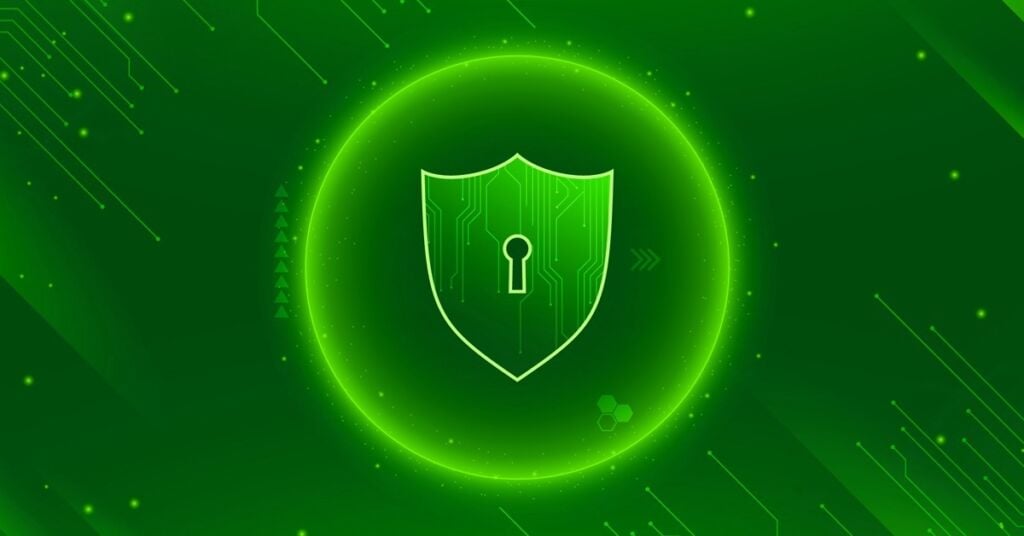
Blockchain technology has changed numerous industries by introducing new methods of storing and moving data without the need for unnecessary servers or connections.
The existing use of blockchain is in the sphere of cryptocurrencies, supply chains, voting, etc. The structure of blockchain is also complex from the perspective of security.
Thus, this guide discusses the aspects of blockchain security, hazards, tips for blockchain network security, and avenues to future blockchain security.
Table of Contents
What is Blockchain Security?
Blockchain security is the process of preserving the integrity, secrecy, and availability of blockchain networks. It covers everything, from cryptographic techniques to consensus mechanisms, and network protocols, that all together aim to secure the data from unauthorized access, tampering, and attacks.
Blockchain Security’s basic constituent components
1. Cryptography: Cryptography is at the heart of blockchain security, that is, it makes sure data remains unchecked and private. Fundamental techniques for blockchain networks running include hashing and public key cryptography.
2. Consensus Mechanisms: Consensus algorithms are an essential part of the blockchain network’s validation of transactions and ensuring there is a single source of truth. Security and decentralization here are different in mechanism, e.g., in Proof of Work (PoW) and Proof of Stake (PoS).
3. Smart Contracts: A smart contract simply executes itself with the terms of the agreement written into code. Smart contracts are increasingly automated processes, but also vulnerable to serious security breaches.
4. Decentralization: Blockchain is a distributed network, hence it’s not run by a single entity. This feature makes security better but that also complicates things, the consensus needs to be on the many nodes.
Blockchain Common Vulnerabilities
In essence, blockchain technology is secured by nature, but it is not fully hackproof. This is important to know to take appropriate security measures.
1. 51% Attacks
A malicious actor gaining control of more than half of the network’s mining power enables them to manipulate transactions and block new transactions from being confirmed, threatening the integrity of a blockchain.
2. Vulnerabilities in Smart Contracts
Codings and security loopholes are present in smart contracts. All these issues can cause serious financial losses such as reentrancy attacks, integer overflow, and improper access control.
The prime example is the infamous 2016 DAO hack which lost Ether worth $60 M.
3. Sybil Attacks
An adversary creates multiple fake identities, giving them an outsize influence over the network, which can disturb the consensus process and result in bad activity.
4. Phishing Attacks
Phishing continues to be a real issue in the blockchain space. Fraudulent websites or emails can trick users into handing over private keys or sensitive information by clicking on them.
Blockchain platforms are exactly like any other software and are open to bugs and vulnerabilities exploited by malicious actors. Security requires regular audits and updates.
Securing the Blockchain Networks: Best Practices
To enhance the security of blockchain networks, several best practices can be implemented:
1. Use Strong Cryptography
Employing robust cryptographic algorithms ensures the integrity of the data and confidentiality. Keep step with developments in technology with regularly updated cryptographic protocols.
2. Build Multi-Signature Wallets
Multi-signature wallets ensure that several private keys have to be involved for permission for a transaction.
3. Secure Regularly
That’s why regular security audits of smart contracts and blockchain protocols allow potential vulnerabilities to be spotted before they can be exploited. Have a third-party security firm assess for unbiased objective audits.
4. Educate Users
Phishing and social engineering attacks are risky and mitigating risks requires user education. Translating security issues into training that can help people recognize fraudulent activities can be very effective.
5. Monitor Network Activity
Monitoring systems that can monitor for unusual activity (albeit implemented robustly) can detect unusual numbers that might indicate an attack. Direct-to-incident alerts can give you a quick response to possible threats.
6. Use Layered Security Measures
The environment is made more resilient by multiple layers of security, such as firewalls, intrusion detection systems, and regular software updates.
Blockchain Security Deployed
As blockchain technology continues to evolve, new trends are emerging in the realm of security:
1. We are writing decentralized identity solutions
Identity solutions that are distributed are coming into the mainstream, and they’re doing so to provide increased security and privacy. These solutions decrease the probability of identity theft and fraud by allowing the user to control his identity and share only what is necessary.
2. Interoperability Standards
As the number of blockchain platforms rises, interoperability standards are a must to improve security. This can help reduce risks posed by cross-chain transactions.
3. Zero-Knowledge Proofs
Zero-knowledge proof – one party shows to another that a statement is true and nothing else in a protocol called zip. The impact of this technology can boost privacy and security in blockchain transactions, especially in the industry of finance and health.
4. Artificial Intelligence, Machine Learning
AI and machine learning are integrated into blockchain security solutions. These technologies can thus also monitor patterns, learn when things deviate from the norm, and discern security risks on the fly.
5. Regulatory Compliance
Now that governments and regulators are setting the rules for dealing with blockchain technology, compliance will be a key aspect of security. Trust is built and legal vulnerabilities are protected against by following regulatory standards.
Conclusion
While on the one hand blockchain technology is a secure and transparent one, there are challenges associated with it on the other.
Something important to learn about blockchain is the vulnerabilities that exist, and best practices for securing them. In the future, we will need to stay informed about emerging trends in technology, emerging technologies, and innovations to maintain a robust security posture.
The full capabilities of blockchain can be harnessed by organizations while mitigating its risks through securing blockchain.
